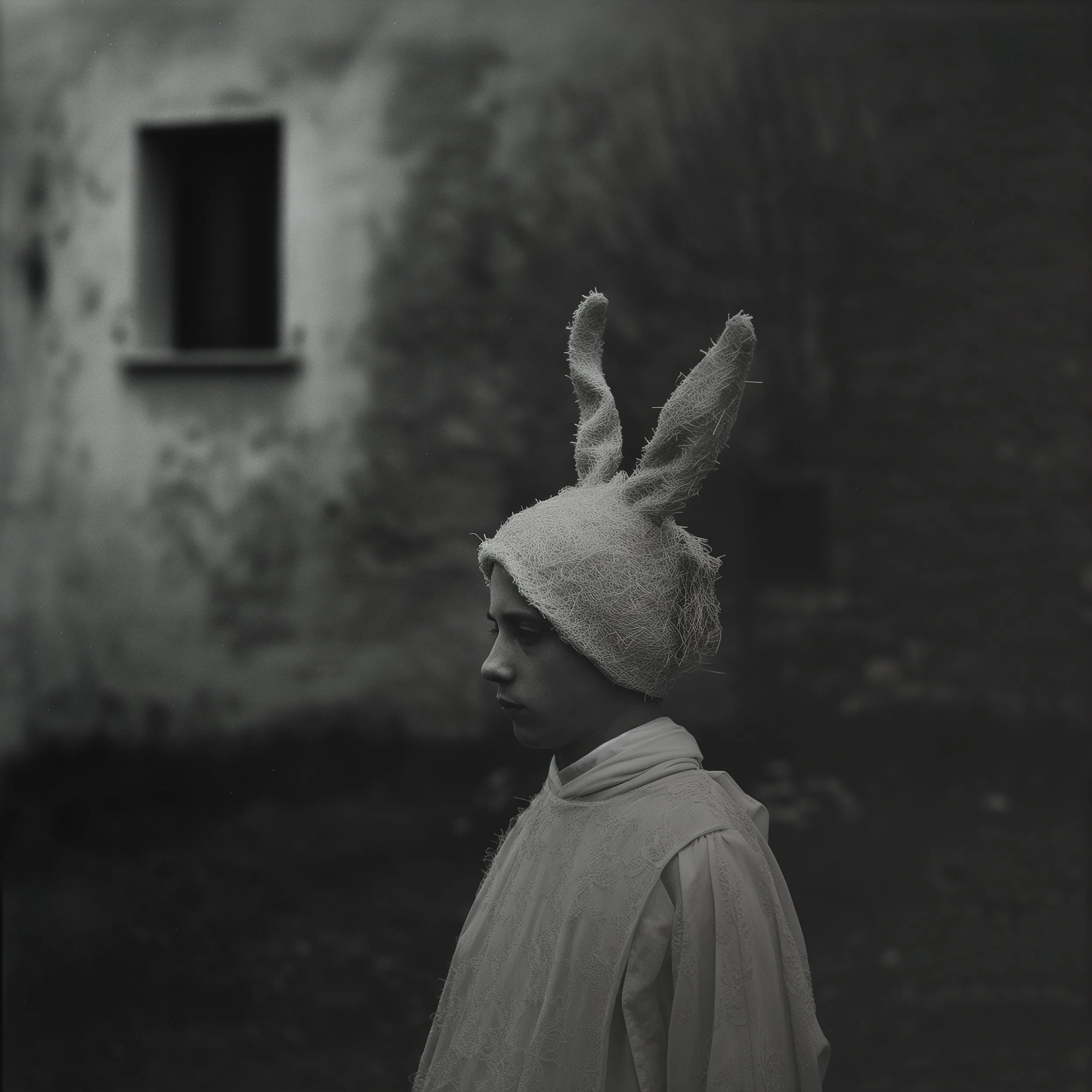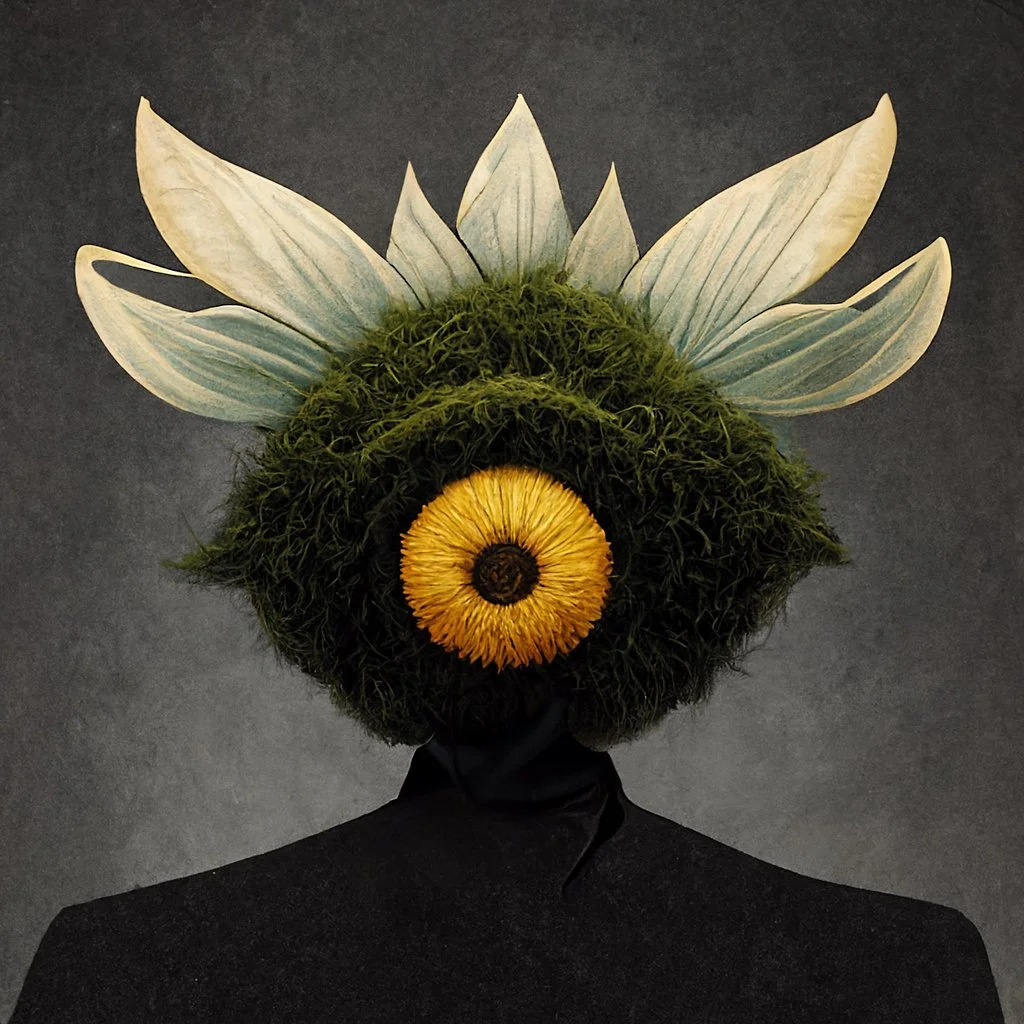A Surreal Theater: The Baroque Intensity of Ada Crow
Ada Crow is a multidisciplinary artist and art historian from Asturias, Spain. With a background that bridges traditional art history and contemporary practice, her work reinterprets iconic imagery through photography, oil painting, drawing, AI, and stop motion. Influenced by Surrealism, Flemish painting, and the Baroque, she seeks a balance between visual beauty and conceptual depth, always circling back to the question of what it means to be human.
Over the past decade, Ada has exhibited widely across New York, Paris, Milan, Dubai, Barcelona, and beyond, while also building a strong career in photography, publishing, and curation. Since 2021, she has expanded into digital art and NFTs, connecting with global audiences and pushing her practice into new forms of expression. Whether through intimate portraits, immersive digital works, or curated projects, Ada’s art reflects both a historical grounding and a contemporary urgency, bridging the local and the universal.
We asked Ada about her art, creative process, and inspirations.
Faraday (AI)
You have a background in Art History — how does that knowledge shape the way you reinterpret iconic imagery in your work?
My training in art history gives me a very broad frame of reference. I am interested not only in the visual aspect, but also in the context, symbols, and cultural significance of iconic images. When I reinterpret them, I do so not merely from an aesthetic perspective, but through a dialogue with their history, what they represented, and what they may mean today.
Hispalis (AI)
Surrealism, Flemish painting, and Baroque all influence your work. What draws you to these historical movements, and how do you bring them into dialogue with digital tools like AI?
What attracts me to surrealism is the absolute freedom to create impossible worlds. From Flemish painting, I am drawn to its meticulousness, attention to detail, and play with symbolism. From the Baroque, I am drawn to its theatricality, emotional intensity, and use of light. AI allows me to take these visual languages and bring them into new narratives.
I had once loved a Poet (Photograph)
Stop motion animation is a fascinating part of your multidisciplinary toolkit. Can you tell us a little about it?
Stop-motion connects me with manual and artisanal work. After years of working with AI, I wanted to return to the “analog” and this medium allows me to combine manual work creating characters and sets and shooting with my SLR camera without completely abandoning the digital medium with post-production. There is something very poetic about this process, each frame is an act of patience, something really strange in me haha.
Jose (AI)
Photography was your first artistic language. What did you carry over from years of portraiture and documentary photography into your digital art practice?
From photography, I inherited my eye: how to frame a shot, how to work with light, how to tell a story in a still image. All of that filters into my digital practice, even though the settings may be completely imagined or generated with AI.
Mutter (AI)
Have there been any surprising or memorable responses to your work?
Yes, one of the most memorable moments was in 2017, when Canon selected one of my photographs of the Berlin Wall for the 365 Days of Summer exhibition. It was a completely unexpected recognition and encouraged me to continue creating and to take my artistic path seriously.
Nevermore (Photograph)
Since 2021, you’ve been deeply engaged in NFTs and international exhibitions. What has been the most transformative part of entering this digital art world?
The most transformative thing has been the opening of borders: suddenly, my work is in dialogue with artists from all over the world, in real time, and reaches collectors who might never have seen me in a physical gallery. Also, continuous learning—technology changes so quickly that it forces you to constantly reinvent yourself.
On Another's Sorrow (Photograph)
You’ve also curated exhibitions. How does the act of curating other artists’ work influence the way you think about your own practice?
Curating forces me to look at things from a different perspective, to listen to what other works are saying and how they interact with each other. This makes me more aware of how my own pieces are perceived as a whole and gives me new insights into how to construct collective narratives rather than just individual ones. Although I must admit that curating can be very exhausting work.
Planck (AI)
What is a fun fact about you?
After suffering a stroke, many of my characters began to appear without heads or with their heads transformed into something else. It was almost unconscious at first, but it became an essential part of my visual language.
Primavera (AI)
What else fills your time when you’re not creating art?
I am passionate about all kinds of sports, soccer, Formula I, Moto GP, tennis, etc. But I watch them from the comfort of my sofa at home, haha. The only sport I practice right now is chess. In my youth, I did classical ballet, but rock & roll concerts won the battle. I am also addicted to movies and TV series.
Saeta (AI)























